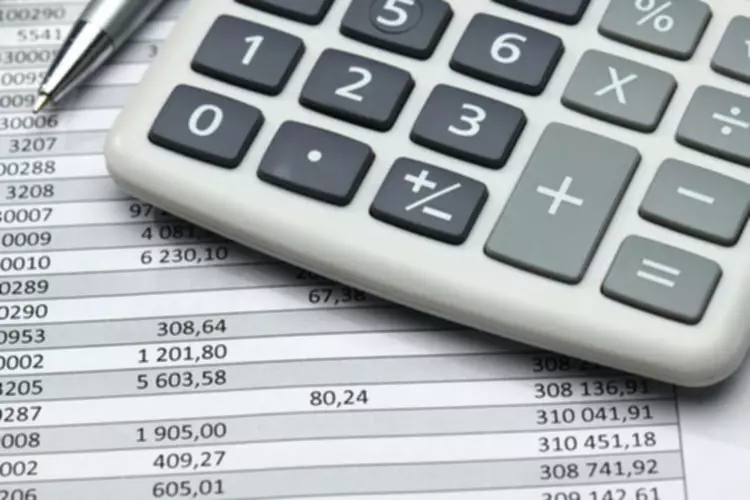Content
- Projected balance sheet for restaurant busrestaurant business plan restaurant business plan ppt file
- Free restaurant P&L template
- Pautas de compra de equipos para restaurantes 2023: una lista de…
- How Restaurant Management Software Can Help You Manage Inventory and Control…
- Together, let’s take your business to the next level.
- Increase Your Profits
- Why Balancing Accounts Is Crucial For The Growth Of Your Restaurant

Katherine is the Content Marketing Manager at TouchBistro, where she writes about trending topics in food and restaurants. The opposite of a picky eater, she’ll try (almost) how to do bookkeeping for a restaurant anything at least once. Whether it’s chowing down on camel burgers in Morocco or snacking on octopus dumplings in Japan, she’s always up for new food experiences.
However, you should not confuse your balance sheet with a cash flow statement, which summarizes cash in and cash out. A cash flow statement should be used alongside your balance sheet and other reports to keep your monetary activities organized. To sum up, you see how important and easy it is to create balance sheets for your restaurant.
Projected balance sheet for restaurant busrestaurant business plan restaurant business plan ppt file
Without the opportunity to make immediate, data-driven decisions with anomalies in P&L numbers, you are leaving money on the table. Running your P&L frequently, through automated daily reporting, allows you to take proactive steps in the moment to counter any immediate problems before they become persistent or costly. You can also get deeper financial insights from your POS by integrating your POS system with Eat App. This opens up a plethora of data regarding spending habits, previous orders, etc. that helps restaurants make more informed and accurate predictions about future sales and cash flow. If numbers are not your thing, reading and understanding financial statements can seem like a daunting task.
- This document provides insight into the current state of your finances (up to a specific date).
- Your P&L doesn’t include how much cash you have on hand or in the bank, the state of your inventory, or if you are staying up to date with your bills.
- Your core operational cash out will include expenses such as your restaurant labor costs, food costs, and services such as advertising.
- Go through all your recipes and insert each ingredient into your master list, under their respective food categories.
- Your restaurant balance sheet can also be used to forecast short and long-term cash flow.
Using templates can save time, create consistency, and promote organization throughout your restaurant accounting system. Using automation with your financial statements is a savvy business decision for any restaurateur. For example, a balance sheet dated December 31, would show a restaurant’s financial status as of the close of business on that particular New Year’s Eve.
Free restaurant P&L template
Restaurants’ top-line or gross income mostly consists of the sale of food and beverage. In franchised systems, a large portion of revenue could be derived from royalties and franchising fees. Restaurant finance reveals many metrics related to revenue that allow foodservice organizations to assess their top-line performance and set targets for their restaurant business plan.
- It’s an indicator of the financial health of a company since it takes account of the balance (or the lack of balance) of its financial structure.
- Numbers are symbols, very much like words, with their own intrinsic
simple meanings when they stand alone and far more complex and meaningful when
in the context of pertinent other numbers. - They need to be compared with your costs so you can begin to make sound decisions.
- You opened your restaurant to fuel your passion for cuisine, not log hundreds of late-night hours learning the ins and outs of all things accounting.
- Your profit and loss statement should not be confused with your restaurant balance sheet.
- Whether it’s chowing down on camel burgers in Morocco or snacking on octopus dumplings in Japan, she’s always up for new food experiences.
The restaurant cash flow statement provides data on cash receipts and payments of the operating, investing, and financial activities of a restaurant for a stated period of time. Once you understand how to create a restaurant balance sheet, you can make informed decisions to help grow your restaurant or bar business. Stay on top of your balance sheet and track all incoming and outgoing https://www.bookstime.com/ transactions. This way you can make the right choices to optimize your business and grow your bottom line. You should also make sure to have a robust restaurant business plan and read some restaurant management books for even more guidance. A restaurant balance sheet is a statement that lists your business assets, liabilities (debt), and equity at a given point in time.
Pautas de compra de equipos para restaurantes 2023: una lista de…
The good news is that you don’t have to be an expert in finance to run a successful restaurant. Your chart of accounts is also not a financial statement, but it, too, is essential to organized restaurant finances. However, it’s recommended that these reports are prepared monthly to dish out a more accurate understanding of your organization’s financial health. So, three critical components of balance sheets are – assets, liabilities, and equity. Understanding these components is important whether you’re doing it manually or using a balance sheet template.
Numbers that have discrepancies should be re-counted, and then entered into the master list only after they’ve been reconciled. Go through all your recipes and insert each ingredient into your master list, under their respective food categories. Go through your list again and input the unit of measure for each ingredient, based on how they will be ordered through your suppliers.
How Restaurant Management Software Can Help You Manage Inventory and Control…
In this section you should segment operating costs within a number of categories. COGS also include variable costs like card payment processing fees (the 2-3% you pay to Visa, Mastercard, Amex, etc.) when your customers pay by card. Under Liabilities, you can see how much is left on your business loan (if there is one), how much you pay monthly in rent for your business, how much your utilities are costing you, and how much you pay in wages.
I began to suspect something was awry when he
asked me to guess what his food cost was running and told me to guess. No restaurant should run that
low of a food cost because in order to do it, prices would be outrageous, the
portions miniscule and the quality dubious. If you don’t want an accountant who is experienced with restaurants, or you’re simply exploring your options, we’re always here to help. This will help you make informed decisions about your business’s finances and identify any potential issues or opportunities for improvement. We recommend working with an experienced restaurant accountant to determine the right amount of debt for your restaurant.
Together, let’s take your business to the next level.
Our fave LGBTQ+ owned bars, restaurants, and bakeries across the country. Under Assets, you can see the totals for categories like petty cash, liquor, bar equipment, kitchen equipment (ovens, grills, microwaves, etc.), and furniture. If a user or application submits more than 10 requests per second, further requests from the IP address(es) may be limited for a brief period. Once the rate of requests has dropped below the threshold for 10 minutes, the user may resume accessing content on SEC.gov. This SEC practice is designed to limit excessive automated searches on SEC.gov and is not intended or expected to impact individuals browsing the SEC.gov website.
What are some issues that the balance sheet can reveal about a restaurant?
The Balance Sheet can show how much debt the restaurant has in terms of unpaid employee tips, state tax liabilities, operating costs, and loans. Knowing how much debt you have is important because it can impact your ability to grow.
Calculating your balance will show you where you sit on this scale to help you better understand if you’re making a profit, breaking even, or losing money. So cash inflows are basically your sales plus any liquidated assets to finance your business plus any small business loans. Actions have consequences, so try to understand the decisions you’re making and how they are affecting the big picture. When you begin to apply reason to the numbers, you’ll start to understand how you can make some decisions to adjust your operations or scale on things that are working well for your restaurant. The cost percentage will be generally determined by the bestsellers on your menu, rather than the menu as a whole. As a general rule, your combined CoGS and labor costs should not exceed 65% of your gross revenue – but if your business is in an expensive market, you should aim for a lower percentage.
The owner was not a numbers
person and had delegated this important task to his operations manager. I knew
that this was not a good situation and one that should not be permitted. It
preyed on my mind so much that several months later I asked him if he ever got
the inventory completed. I then told him that as long as he did not
have a month-end inventory, he was vulnerable to the same fraud that had nearly
bankrupted the company earlier.

You would understandably want to spend all your time trying to improve your restaurant’s operations rather than reading a bunch of boring papers. If cash receipts are greater than cash payments, the result is a positive cash flow, also called Cash Inflow. A negative cash flow, also called a Cash Outflow, is the result of cash payments being greater than cash receipts. This has a different meaning than the phrase “for a stated period of time,” which describes a time period covered by an income statement. Restaurant financial statements should be prepared on a schedule created by management.
